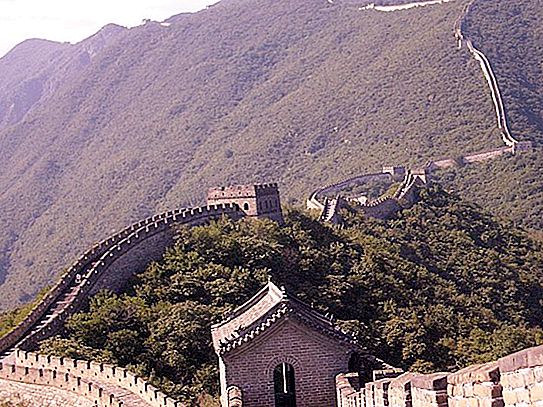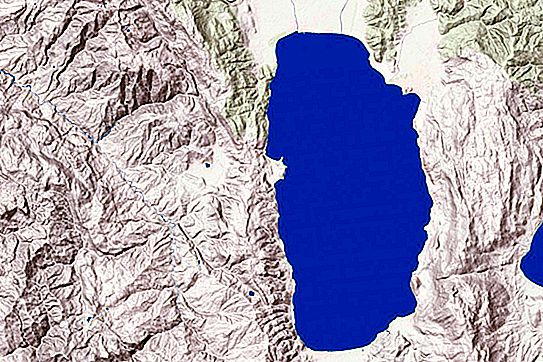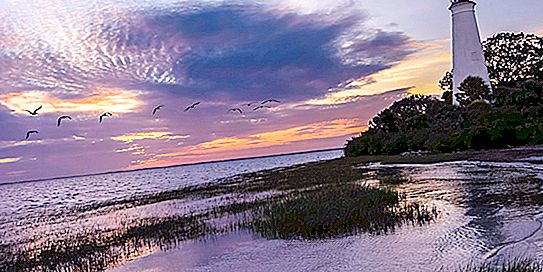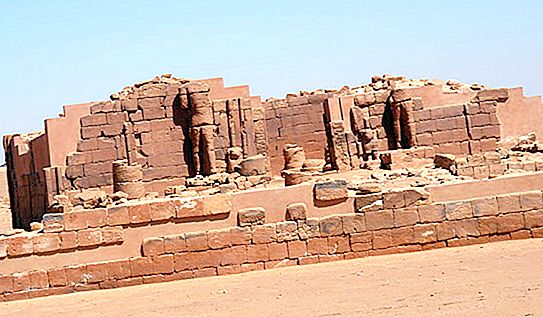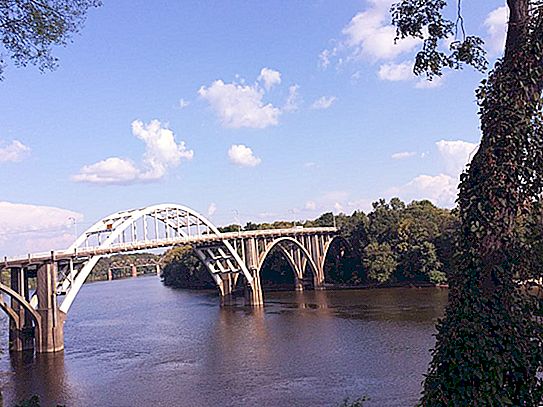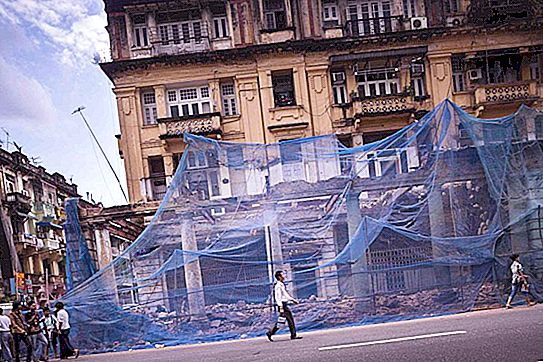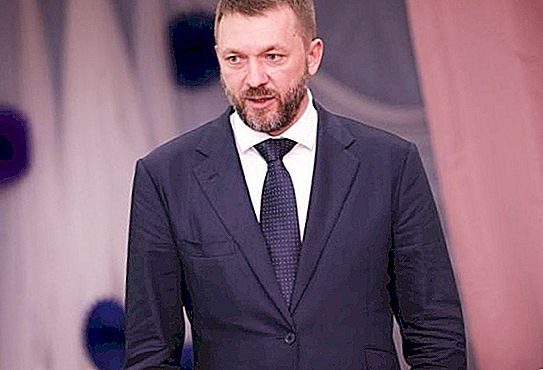Monuments of nature and culture need full protection from society and the state. Only in this case can they appear before the descendants, be the pride of the people. Of course, such protection should be regulated precisely at the state level. In the Russian Federation, there are several important legislative acts devoted specifically to the protection zones of cultural heritage sites. We will analyze these documents, highlighting the features of these zones, their classification, and legal requirements.
Regulatory acts
The provisions on the protection zones of cultural heritage objects include the following acts:
- Federal Law No. 73 (published in 2002, last revised in August 2018) "On the Cultural Heritage of the Russian Federation." In particular, Art. 34.
- Decree of the Russian Government No. 972 "Regulations on the zones of protection of objects of cultural heritage of the peoples of the Russian Federation."
Additions to these acts were made by these federal laws:
- Federal Law No. 342 (2018).
- Federal Law No. 315 (2014).
Further, in the material, on the basis of the abovementioned documents, we will analyze important definitions and introduce a classification of security zones. In addition, these legislative acts contain information on drafting, characterization of regimes, which is also important to present to the reader.
What is it?
First of all, we give a definition.
The zone of protection of cultural heritage objects is a certain territory, within the boundaries of which, to ensure the integrity of these objects, a special regime for the use of land plots is established. It is designed to limit economic activity and completely prohibit construction in this territory.
An exception is the use of special measures that are aimed at preserving, reconstructing, regenerating the natural, historical, town-planning zone of the natural heritage object.
In addition, the article will use close, but not identical to the above concepts:
- The zone of regulation of economic activity and development is the territory within the boundaries of which a regime of land exploitation will be established, limiting economic activity and construction measures. It also defines the requirements for the reconstruction of existing structures and buildings.
- The zone of the natural protected landscape is the territory within the boundaries of which a special regime of land use will be established, both narrowing and prohibiting the construction, economic activity, reconstruction of existing structures in order to preserve the unique natural landscape. The latter can be considered river valleys, forests, ponds, terrain compositionally associated with a culturally significant object.
Based on this, a classification can be made.
Varieties
Protected areas of objects of cultural heritage are equipped to ensure the safety of the latter. They are installed in the historical environment of the object, directly on the terrain associated with it. Protection zones can be of three varieties:
- Protected area of cultural heritage.
- Zone of regulation of buildings and various business activities.
- Area of natural protected landscape.
The required composition of protected areas is determined by the design of protected areas of cultural heritage sites.
In order to simultaneously ensure the protection of several cultural and natural objects located next to each other, it is allowed to create a unified security zone for them. What can be included in it? The same types:
- A single zone for the protection of cultural heritage.
- A single zone of regulation of economic activity, buildings.
- A single zone of a natural protected landscape.
The composition of such a united zone is determined by the project of the united conservation zones of cultural heritage sites. We proceed to the next topic.
The basis for project development
Let us now examine the development of protected areas of cultural heritage sites. It can be carried out both by physical and legal entities. persons based on data from architectural, historical, archival studies, taking into account information from the state real estate cadastre.
The composition of such a zone is determined on the basis of the draft protection zones for cultural heritage sites. It is based on materials of architectural and historical research, which fully substantiate it.
Cultural, historical research data is formed on the basis of the following information:
- The basic cultural and historical plan of that settlement, city, on the lands of which there is a culturally significant object (either its fragment or a whole group of objects).
- Information about the identified objects related to the cultural heritage, their established territories, which are located within the boundaries of the planned protection zone.
- Materials of already developed projects of protective zones around culturally significant objects located both within the boundaries of a particular settlement, and in inter-settlement territories.
- Materials of visual, landscape analysis of the compositional connection of the object of cultural heritage (or their group) with the landscape environment, surrounding buildings.
- Other data that are necessary for the preparation and justification of the project.
Project development
The development of protection zones projects for cultural heritage sites of Moscow and other constituent entities of the Russian Federation, as well as historical and architectural studies substantiating them, are areas of federal and regional target programs of the Russian Federation. Among other things, they provide for conservation, popularization, state. the protection and use of natural and cultural monuments.
The development of these projects can also be carried out on the initiative (and at the expense of finances) of the municipal government, owners or direct users of these culturally significant objects. As well as the owners of land allotments, somehow related to the monuments of nature and culture.
The development of projects of permanent and temporary protection zones of objects of cultural heritage is also initiated by the Russian Ministry of Culture, state authorities of the subjects of the federation, and the structure of local self-government.
The Ministry of Culture of the Russian Federation is also obliged to give methodological recommendations on the procurement of materials, which form the basis of the projects of protected zones around the monuments of nature and culture. The same structure determines the coordination of projects of various cultural heritage objects with state authorities. authorities providing them (monuments) protection.
Project and Zone Boundaries
Now another important concept. Projects of the protection zone of a cultural or nature monument (or the united zone) are text documentation, as well as information presented in the form of maps, diagrams, which forms a complete picture of the boundaries of the protected area. Mandatory listing of land exploitation regimes in this zone, as well as the requirements of urban planning regulations within this territory.
The boundaries of the protection zone of objects of cultural heritage are lines that indicate the territory beyond which city planning, economic or other activities will not have a negative impact (either direct or indirect) on the preservation of a cultural monument or nature in its natural environment.
The designation of these lines, as well as the coordinates of the reference points of the boundaries of protected zones on diagrams and maps should uniquely determine the limits of protected areas. The accuracy is derived to the standards specific to the state real estate cadastre.
It is important to note that the boundaries of protected areas around cultural and nature monuments may not be combined with the boundaries of land, the boundaries of other territorial objects.
Security Zone Mode
According to the Law on Protected Areas of Cultural Heritage Sites, the following restrictions are imposed on the operation of land plots, requirements for urban development in this territory:
- The ban on the construction of capital buildings. That is, for the construction of a cultural heritage object in the protection zone. An exception is the use of special measures aimed at the regeneration, restoration of the natural, historical, urban area of an object, the restoration or restoration of its completely / partially lost components, characteristics.
- The restriction on overhaul and reconstruction of capital development (or its parts), which can change the sizes, proportions, parameters of these objects, involves the use of other building materials, color solutions, design features of small buildings.
- Preservation of typological, large-scale, planning characteristics of the natural and urban planning environment, including historical valuable objects forming the overall plan.
- Guaranteeing the visual perception of a cultural monument or nature in its natural environment. This also includes ensuring the preservation of the surrounding landscape, historical small buildings.
- Compliance with all requirements for environmental protection, which guarantee the safety of the object in its natural historical and landscape environment.
- Other requirements that determine the preservation of a cultural monument.
The mode for the zone of restriction of development and economic activity
The requirements for the regime of the regulation zone of economic activity and development will be slightly different from the requirements for the regime of the protection zone around the monuments of nature and culture. Consider these requirements:
- Restriction of construction to the extent necessary for the preservation of a culturally significant object in its original historical environment. The restriction also applies to the parameters, proportions and sizes of capital buildings / their parts, the use of certain building materials and color schemes.
- Restriction on overhaul, reconstruction of capital buildings, if the work is associated with a change in their shapes, proportions, sizes, parameters, the use of other building materials and color schemes.
- Guaranteeing the visual perception by visitors of a monument of nature or culture in its original landscape, historical environment.
- Restriction of economic activity to the extent that it will not negatively affect the object.
- Preservation of the quality of the natural environment to the extent that it becomes possible to preserve a natural monument or culture.
- Compliance with all environmental regulations, which can to some extent contribute to the preservation of a culturally important object for future generations.
- Other requirements excluding the influence of negative factors on the monument.
Mode for the area of natural protected landscape
The regime for this territory must be compiled taking into account these requirements:
- The ban on the construction of capital buildings, the limitation of economic activity, the ban on capital repairs and reconstruction of buildings (capital development), in order to preserve / restore the connection of a nature monument or culture with the surrounding landscape. The latter includes river valleys, ponds, open spaces and forests. The only exception will be the construction of small buildings, work on the general improvement of the territory.
- Maintaining the quality of the environment that is necessary for the conservation and regeneration of the protected natural landscape.
- Preservation of the ratios of indoor and outdoor spaces, historically characteristic in a nature-protected landscape, with the aim of the integrity of the perception of a culturally significant object in its original natural, historical environment.
- Compliance with environmental requirements that can ensure the preservation of the protected natural landscape in its natural environment.
- Other requirements that ensure the preservation, regeneration of the protected monument of culture or nature.
Coordination with the Ministry of Culture
In order to introduce any of the listed regimes on a certain territory, as well as establish the boundaries of the surrounding zones, the requirements for various urban planning regulations, the prepared project must be agreed with the Ministry of Culture of the Russian Federation. To do this, the authorized person in the field of state protection of monuments, objects of cultural significance provides the following documentation:
- A draft legal act that approves the boundaries of a protected zone, an object, the regime applicable in this territory, and regulations regarding urban planning regulations.
- Design of a conservation area for a natural or cultural monument.
- Data on the results of the consideration of the above projects either by the executive authorities of any of the Russian entities, or by the authorized person in the field of state protection of culturally significant objects of the peoples of the Russian Federation.
- The conclusion of the historical and cultural state examination.
